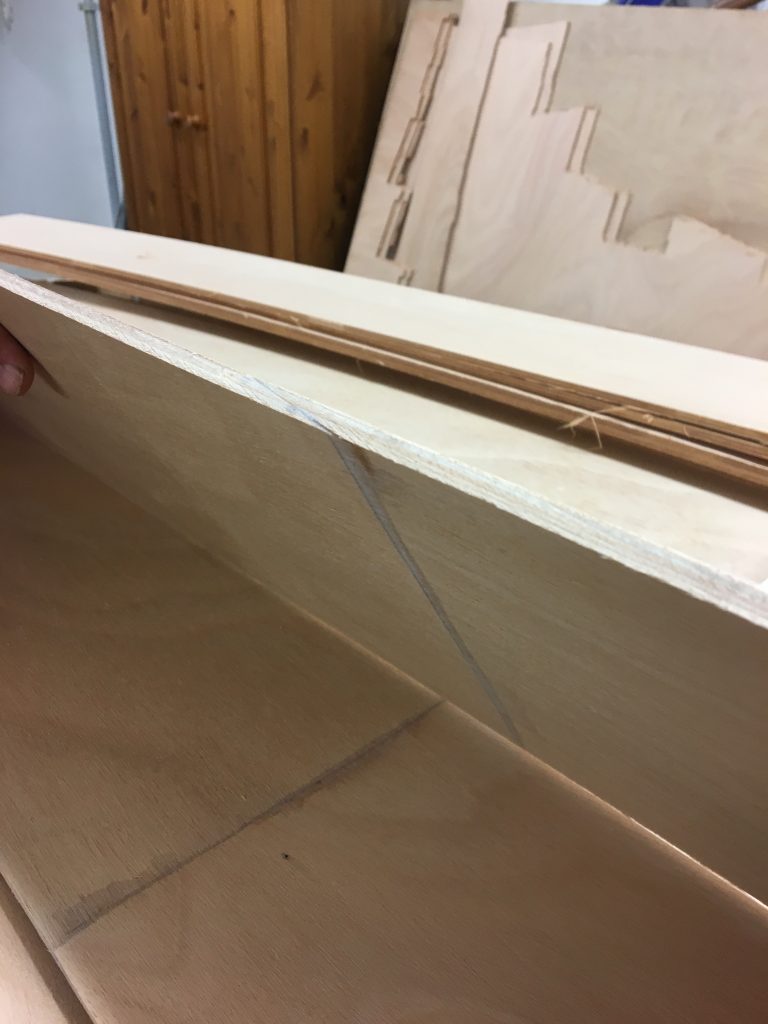As the kit is machined from 8′ x 4′ sheets of ply, making the strakes for a 12′ dinghy is obviously going to require some joining. One option is to use a kind of jigsaw puzzle joint, which is an option that Jordan can do, but you will never get as fair a finish as with scarphing. However, it is more difficult to do (apparently).
There is a nice little video on the Jordan website which describes the process very well, and also the relevant pages in the manual are well written. To create the scarphs, you can either use a router (probably more accurate but needs jigging) or a belt sander (actually quite easy but must be done with care). I opted for the latter, and this is where my Wickes worktop came in really handy! I couldn’t imagine doing this without a long workspace.

Once cut and cleaned from the sheet, pair up the two halves of each strake, and mark them carefully for identification. Also mark the faces, so you don’t end up with a nice S-shaped strake which will fit nowhere! It’s worth spending a bit of tea-drinking time just checking and double-checking and remember the strakes for each side of the boat are mirror image.

Four of the strakes after gluing. Looks good! 
A finished scarph after tidying up. Strong and smooth.
When it comes to pairing up the two halves of the strake, there are some little holes in each part which are used to line everything up using string. You then pin the pieces down to the worktop ready for gluing. Do a dry run several times, as the alignment is very crucial. Get it wrong now, and you’ll have a wobbly boat.
